Farm-to-Table? No and Yes.
“Farm-to-table” has become the restaurant world’s favorite Barefaced Lie. You heard us. Bare. Faced. Lie. A restaurant can throw around the term with no accountability, based on a few items sourced from a “claimed-to-be-nearby” farm, which is unlikely to be true in, for example, Metro Manila. Unlike many others in the restaurant industry, we’re not going to lie to you.
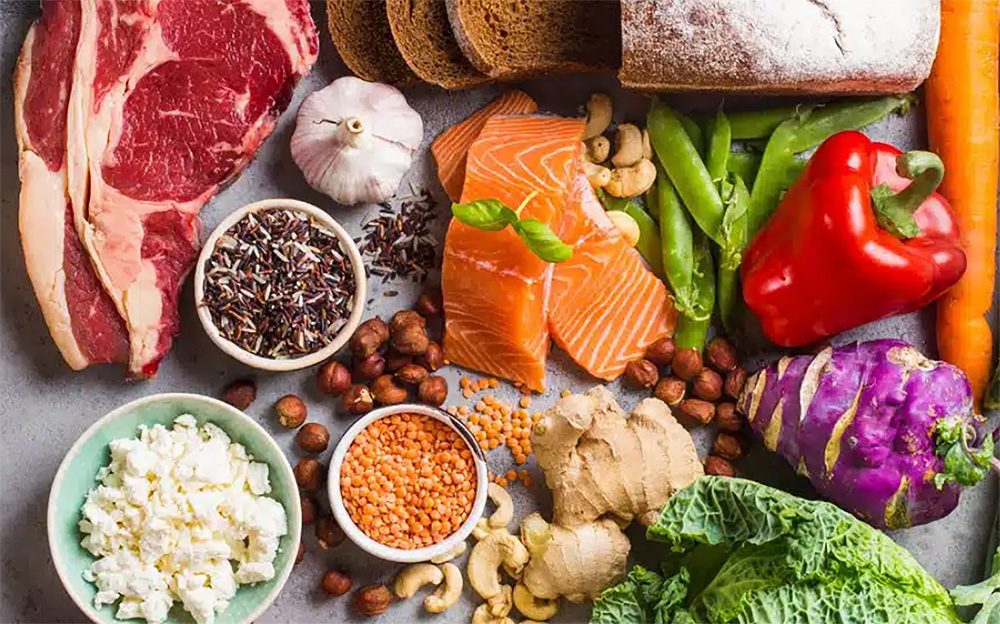
Study this photo, a typical “Farm-to-Table” spread intended to evoke wholesome goodness. The wheat for that bread probably came from the Ukraine. The salmon is from Norway (grown in open-sea pens). The hazelnuts are probably from Turkey, the cashews from India or Vietnam. The garlic is almost certainly from China. The cattle for the low-quality (unmarbled) beef might have been grown in the Philippines, but not near any restaurant. So what’s “Farm-to-Table” about it?
No genius is needed to buy a cabbage and boil it, which is about what most “Farm-to-Table” restaurants anywhere in the world do. J. Manuel once ate in a Michelin-starred restaurant in Europe, which had exactly eight items on its menu, all claimed to be “farm-to-table” — as a result, it was all inedible, including the undeniably non-local seafood and a fancy dish allegedly made with local eggs.
An establishment like Plantation Bay needs to serve widely-varied Filipino and international cuisine in four restaurants for knowledgable visitors from around the world. Daily. Such an operation cannot possibly obtain even a minor part of its raw food ingredients from nearby local sources. If it could, most of that “locally-sourced” produce (as with the above-cited restaurant in Europe) would be inferior in quality to what’s produced somewhere else, and would cost a lot more.
All that said, Plantation Bay in fact is more “farm-to-table” in substance and spirit than most restaurants around the world, and specifically the Philippines, that glorify themselves with this claim.
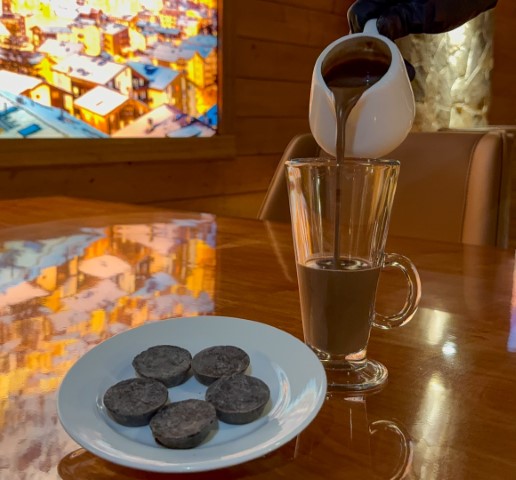
We grow our own mushrooms and many kitchen herbs. The cacao for our Cebu artisanal chocolate drink comes from a shareholder’s farm an hour away. We buy local coconuts, bananas, and mangoes, also papaya, guavas, moringa, mung beans. We grow the fresh flowers widely used around the resort, but also choose lovely artificial flowers for Palermo’s tables rather than fresh-cut flowers which cost 3 pounds of greenhouse emissions for every single long-stemmed rose that will last just a few days in a “classy” hotel lobby.
But we don’t claim to be “Farm-to-Table”. It would be dishonest. The butter for our croissants is a very specific brand from Belgium. Our red meats include Japanese A5, USDA Prime Ribeye, and New Zealand lamb. We used to import fattened-duck livers from France, with which to make our own foie gras, but some years back desisted, agreeing the force-feeding was inhumane.
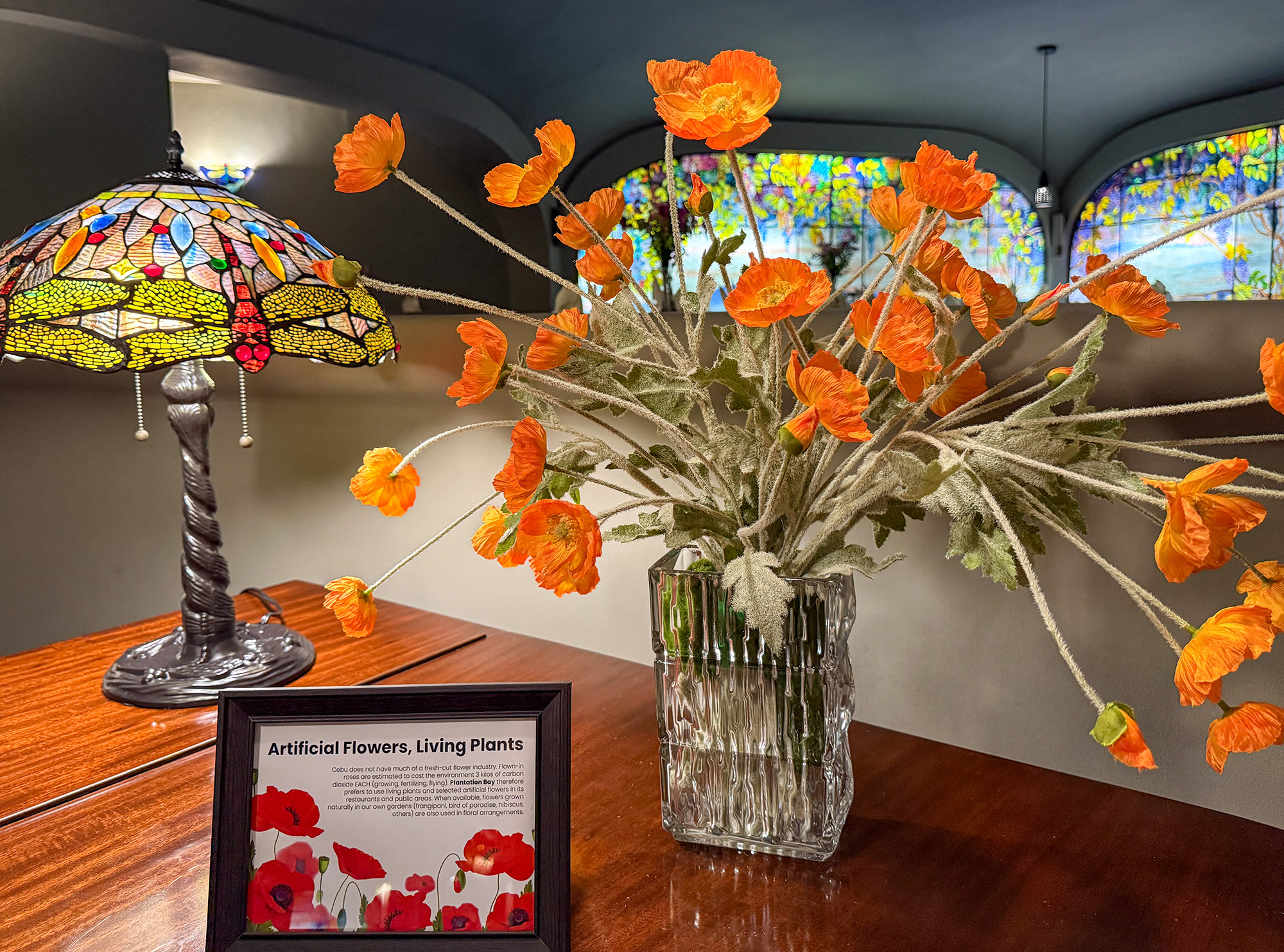
Where we excel is in cutting out intermediate processors, making much of our food as close to “natural” or “basic ingredients” as it can reasonably be, and as good (meaning wholesome and good-tasting) as we can make it.
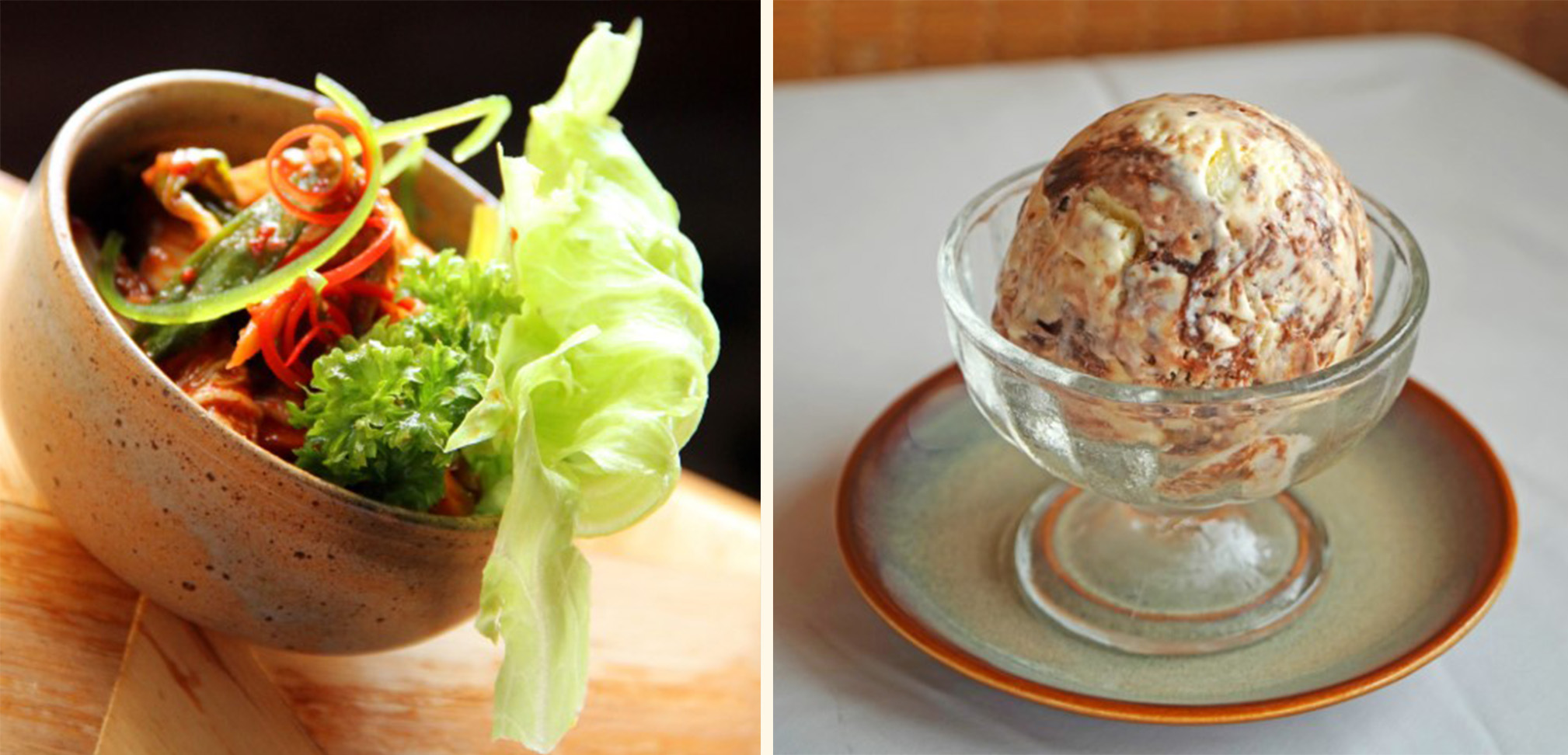
Our mayonnaise is made by us with local eggs but imported olive oil. Our ice cream is home-made with no preservatives or cellulose extenders. Our range of Ube desserts starts from scratch with raw tuber. We grind and make the beef patties for our famous hamburgers ourselves, as well as our own Filipino breakfast sausage — no nitrates or preservatives. We also make our own kimchi and achara (another probiotic) as well as our own Kefir.
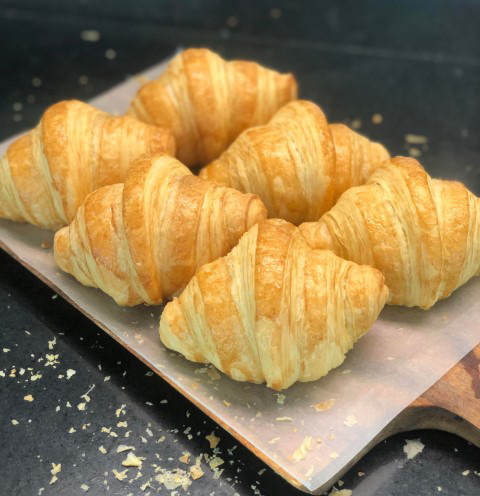
Every kind of bread and pastry offered in Plantation Bay is made by us without preservatives, never bought from an outside factory. This is true for the croissants which are as good as any in Paris to the Danishes which are better than any we ever found in New York, to the ensaymadas which delight Filipino children.
We don’t buy Mexican salsa, we make it. We also make our own tahine and hummus. Our cooking oil is healthy coconut from the Philippines (we’re not sure where it was grown, but it didn’t come far) rather than the cheaper canola from Canada or soybean from Iowa (both Genetically-Modified and Ultra-Processed).
So don’t be fooled by “Farm-to-Table” claims anywhere in the world. The transport costs supposedly avoided are outweighed by less-efficient small-scale agriculture or wrong climate, and the “taste and freshness” difference is simply non-existent for most vegetables. A lettuce that was carefully picked, washed, and packed 300 miles away in the right climate, will taste as good or better than one grown in heat and transported on the back of a water buffalo.
Meanwhile, the true difference in “healthiness” lies in avoiding emulsifying, shelf-stabilizing, bleaching, purifying, de-odorizing chemicals in almost every packaged food that are slow poisons and (we maintain) the reason for widespread obesity and rising rates of young-adult kidney failure and colon cancer in certain countries, such as the Philippines.
I’d like to learn more about Plantation Bay’s food:
